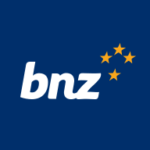May Market Snapshot
12 May 2023
Investment returns have been strong since the start of the year, supported by some signs of moderating inflation and an improved growth outlook. That said, investors have been kept on their toes by shifting market developments, which have generated some notable ups and downs in investment prices.
The year started on a positive note, as share and bond markets responded favourably to a better inflation outlook and the potential that the relentless cycle of interest rate hikes from central banks would soon end. Investors were also buoyed by the anticipated positive impacts of the reopening of the Chinese economy from its prolonged COVID shutdown.
This good start didn’t last for long though. Markets reversed in February, as an exceptionally strong US jobs data report and a pick-up in inflation pointed to more rate rises ahead. These developments, though, were overshadowed by a mini-banking crisis that spread shockwaves through financial markets.
In the second week of March, three medium sized US banks, which primarily serviced customers in the technology sector, collapsed. This was followed by the demise of Credit Suisse, a once venerable but struggling Swiss bank, and its subsequent rescue by domestic rival UBS.
These events caused an abrupt U-turn in the outlook for future interest rate increases. Bond yields (which move in the opposite direction to bond prices) plunged, reflecting a view that the banking sector turmoil might lead the US Federal Reserve (Fed) to pause or halt rate hikes. Share markets also fell initially, with the value of financial sector companies being hit especially hard. Fears of contagion, as depositors rushed to pull their money out of small and medium-sized US banks, saw authorities step in with talk and action to shore up confidence.
This seems to be having its desired effect, and markets have calmed. At the time of writing, global share markets are sitting near to their highest levels of the year. That said, the repercussions of these banking failures are likely to play out gradually and add to the prevailing sense of caution in financial markets. In particular, faced with greater risk, banks are likely to reinforce their balance sheets by curtailing the availability of credit. This would slow economic activity and reduce businesses’ profitability.
This threat has not yet been enough to stop central banks from pulling back in their battle against inflation. The Fed and the Bank of England raised interest rates by 0.25% at the end of March, and the Reserve Bank of New Zealand surprised investors with a 0.50% increase at the start of April. That said, it does appear that inflation has peaked, and there is a reasonable chance that the interest rate hiking cycle will soon end. This good news, though, sits within the broader context of a potential slow-down in economic growth, and more difficult conditions for businesses and consumers. Uncertainty is likely to remain heightened over the next few months.
This article is solely for information purposes. It’s not financial or other professional advice. For help, please contact BNZ or your professional adviser.
No representation or warranty is made as to the accuracy, reliability or completeness of any statement made in this article.
No party, including BNZ, is liable for direct or indirect loss or damage resulting from the content of this article. Any opinions in this article are not necessarily shared by BNZ or anyone else.



